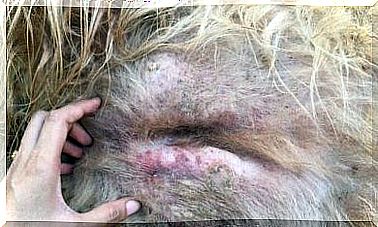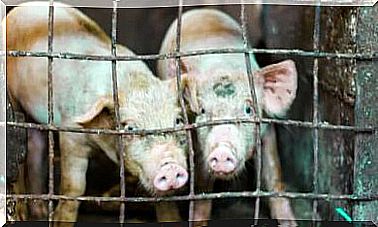Porcupine: Precious And Endangered
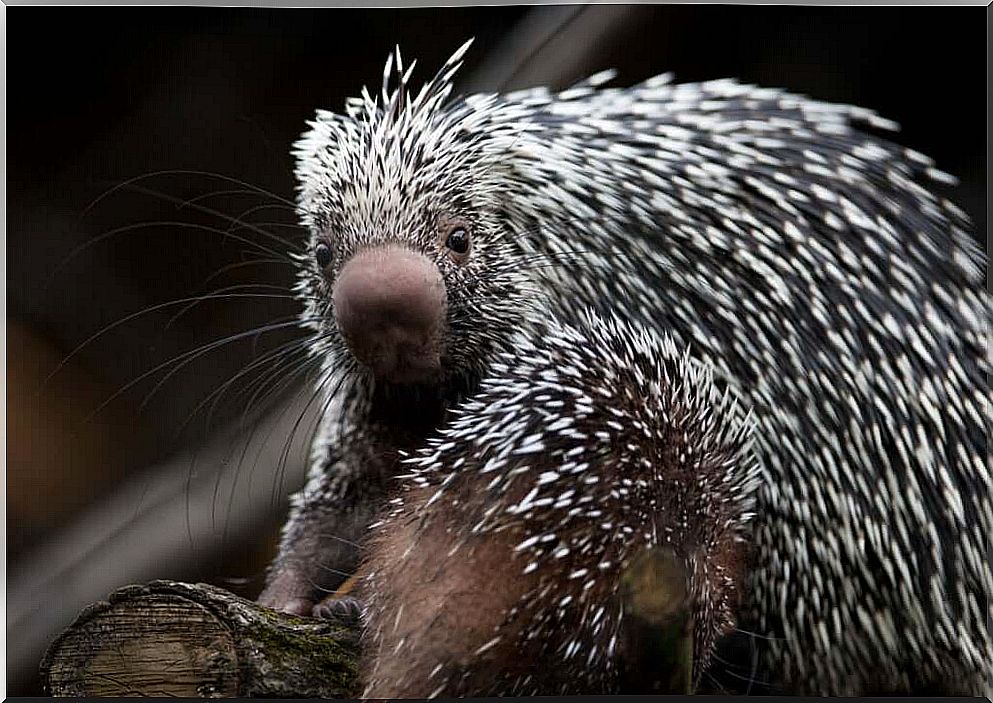
The porcupine is one of the most peculiar animals of the rodent family. It is characterized by having the body covered with thorns, however, it does not share any kinship with hedgehogs or echidnas.
Porcupines can be found in Europe, Africa, India and America. Some live in grassland, desert and forest soils, while others are arboreal and spend their lives among vines and branches.
A body covered in thorns
The most characteristic feature of the porcupine is its spines, as a single specimen can have up to 30,000 covering its body, and each of them can measure more than 30 centimeters in length.
The prongs are modified hairs inserted into the animal’s musculature. Depending on the gender, they can be found in groups or interspersed with fur.
Through the spikes it is possible to distinguish the different species of porcupines. They are kept in a horizontal position as long as the animal is not feeling threatened. However, when the porcupine is in danger, it bristles its back, raising its thousands of stingers as a deterrent message of danger or threat.
The thorns can be released when something or someone comes in contact with them, or they can be released when the animal shakes its body, but they are not fired at potential predators.
It is very easy for one of the spikes to end up in the skin of another animal or the individual, but it is not so easy to extract them. Each of the spikes has at its tip a structure of microscopic spines facing backwards that reduce the penetration force, but maximize the permanence in the skin.
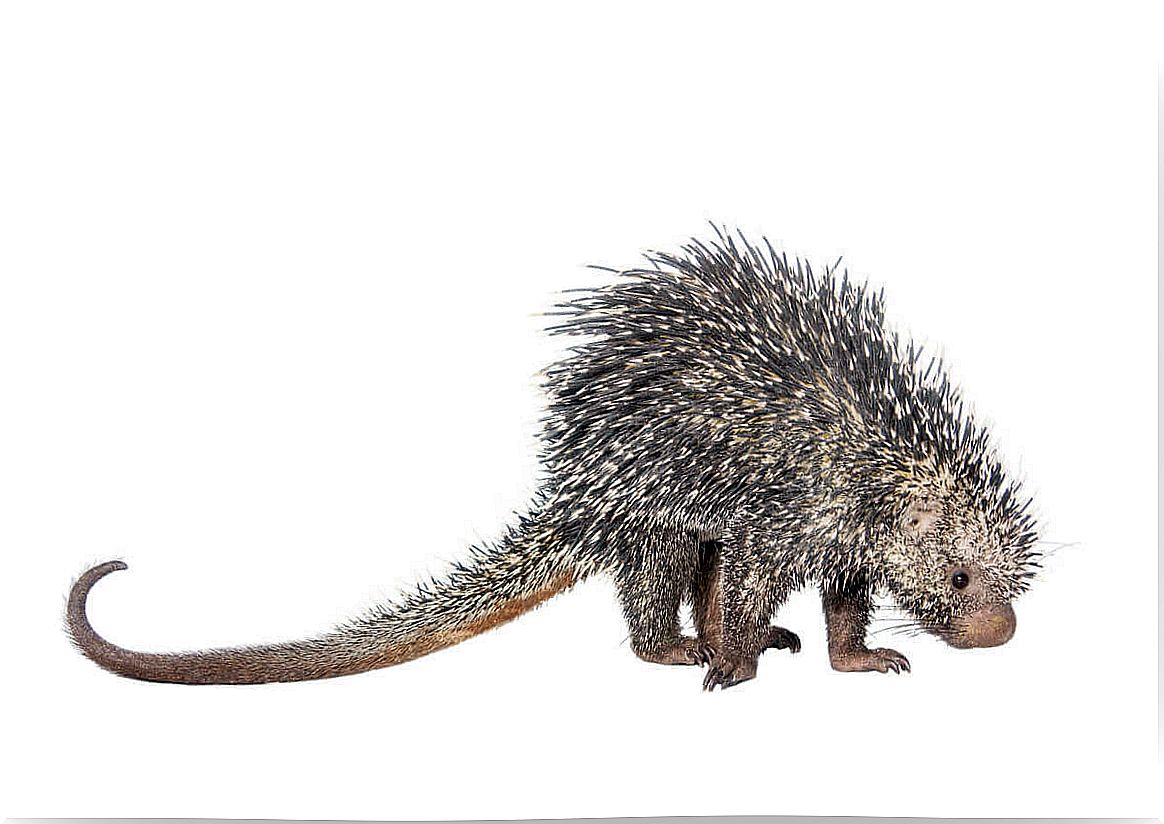
The porcupine is a great climber
The arboreal species inhabit the American continent, are great climbers and spend most of their time in trees.
The genus Coendou includes the porcupines that inhabit the Amazon region. Coendou prehensilis is the Brazilian porcupine or just porcupine, and its name refers to its prehensile tail, which facilitates climbing.
It is a nocturnal and solitary animal, it only interacts with others of its species during the breeding season or in intraspecific fights. In fact, these animals emit olfactory signals to alert potential competitors of their presence. Also, the noise your thorns make when they collide is also an intimidating sign.
During the day, they rest about six meters high in the trees. During the night, they become more active and forage among young leaves, stems, fruits, flowers, roots and bark, as their diet is mainly herbivorous.
How do we differentiate it from other hedgehogs?
The Brazilian porcupine is a medium-sized species, about 55 centimeters long. It is completely covered by long tricolored spikes, with a white and half-brown base and tip. The spikes are longer in the upper back and taper towards the tail.
Its head is rounded, with a prominent pink nose and lips. Its ears are small and hidden between the tips of the head. The tail is pointless, prehensile and about the same size as the head and body combined.
Antibiotic thorns to cure “autopicked”
The Brazilian porcupine is not the only climbing species on the American continent. Of the 16 arboreal species, 15 have a prehensile tail. The species that does not have this member has developed a unique mechanism to avoid injuring itself by biting itself with its own spikes when falling from trees.
American porcupine prigs contain a topical antibiotic, so even if they bite, they won’t react. The attack of one of these animals can be quite painful, such is its effectiveness, that the big cats of Africa think twice before hunting a porcupine.
Prickly pears are not poisonous, but they can infect and penetrate delicate areas such as the face, nostrils, or gums. They can also pass through vital areas such as the heart or large vessels such as arteries.
Lions generally only incorporate these animals into their diet if resources are scarce, such as in times of drought. Still, they could be seriously injured.
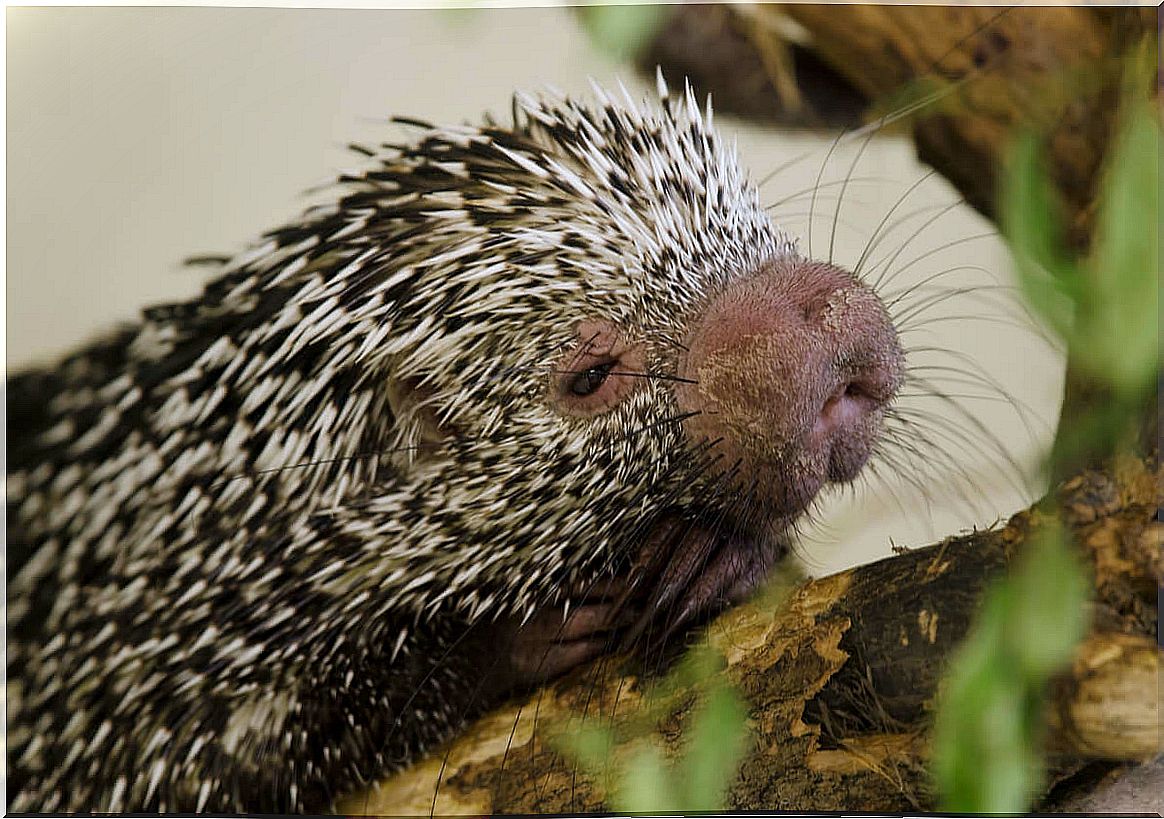
The porcupine is seriously threatened in America
The destruction of the habitat of the Brazilian porcupine is the main cause of its disappearance, as the species is currently threatened.
The populations of the Amazon basin are fragmented by the deforestation of the forests they inhabit, which causes the inbreeding of many species of the genus.




